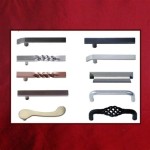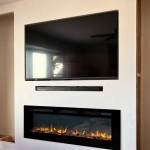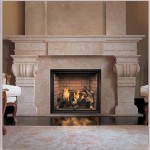Two-Way Fireplaces: Design, Functionality, and Installation Considerations
A two-way fireplace, also known as a see-through or peninsula fireplace, offers a unique architectural element that can significantly enhance the ambiance and functionality of interior spaces. Unlike traditional fireplaces designed to be viewed from a single perspective, a two-way fireplace allows the fire to be enjoyed from two separate rooms or areas simultaneously. This feature makes them particularly suitable for open-concept layouts, room dividers, and transitional spaces, adding warmth, visual appeal, and a sense of connection between different zones within a home or building.
The design and installation of a two-way fireplace require careful planning and consideration of various factors, including building codes, ventilation requirements, fuel type, and aesthetic integration with the surrounding environment. Understanding the different types of two-way fireplaces available, their advantages and disadvantages, and the necessary installation procedures is crucial for ensuring a safe, efficient, and visually appealing outcome.
Types of Two-Way Fireplaces
Two-way fireplaces are available in various fuel types, each with its own set of characteristics and installation requirements. The most common types include wood-burning, gas, and electric fireplaces. The choice of fuel type will significantly impact the overall cost, maintenance requirements, and environmental impact of the fireplace.
Wood-Burning Two-Way Fireplaces: These offer the traditional ambiance and crackling sounds associated with real wood fires. However, they require a chimney for proper ventilation of smoke and combustion byproducts. Installation of a wood-burning two-way fireplace typically involves significant structural modifications to accommodate the chimney and firebox. It's also important to consider local regulations regarding wood-burning fireplaces, as some areas have restrictions or bans due to air quality concerns. Regular maintenance, including chimney sweeping and ash removal, is essential for safe operation.
Gas Two-Way Fireplaces: Gas fireplaces offer convenience and ease of use, with the ability to ignite and extinguish the flame with the flip of a switch or the press of a button on a remote control. They can be fueled by natural gas or propane, requiring a gas line connection. Installation involves running gas lines to the fireplace location and ensuring proper ventilation. Gas fireplaces can be vented directly through an exterior wall or roof, or they can be vent-free, although vent-free models may have limitations and are not permitted in all jurisdictions. Gas fireplaces offer a clean-burning option compared to wood-burning fireplaces, with lower emissions and less maintenance.
Electric Two-Way Fireplaces: Electric fireplaces are the most versatile and easiest to install, as they do not require a chimney or gas line. They simply plug into a standard electrical outlet. Electric fireplaces use electric heating elements to generate heat and often incorporate realistic flame effects to simulate the appearance of a real fire. They are a good option for apartments, condominiums, or homes where venting is not feasible or desired. Electric fireplaces are also energy-efficient, as they can be operated with or without heat, allowing enjoyment of the flame effect without the added warmth. However, they may not provide the same level of heat output as wood-burning or gas fireplaces.
Design and Aesthetic Considerations
The design of a two-way fireplace should complement the architectural style and decor of the surrounding spaces. The firebox can be framed with a variety of materials, including stone, brick, tile, wood, or metal, to create a visually appealing focal point. The framing should be carefully chosen to harmonize with the existing colors, textures, and design elements of the rooms. Consider the sightlines from different angles and ensure that the fireplace is visually appealing from both sides.
The size and shape of the fireplace should be proportionate to the size of the rooms it serves. A large fireplace may overpower a small space, while a small fireplace may be lost in a large room. The height of the fireplace should also be considered, ensuring that it is comfortable to view from both standing and seated positions. The design should also incorporate safety features, such as a protective screen or barrier, to prevent accidental contact with the flames.
Lighting plays a crucial role in enhancing the ambiance of a two-way fireplace. Consider incorporating accent lighting, such as spotlights or recessed lighting, to highlight the fireplace's features and create a warm and inviting atmosphere. The lighting should be adjustable to allow for different moods and occasions. The fireplace itself can also be equipped with integrated lighting to illuminate the flames and create a more dramatic effect.
The surrounding furniture and decor should be carefully selected to complement the fireplace. Arrange seating areas on both sides of the fireplace to encourage conversation and interaction. Use rugs, pillows, and throws to create a cozy and inviting atmosphere. Avoid placing flammable materials too close to the fireplace, and ensure that there is adequate clearance for safe operation.
Installation and Safety Requirements
Installing a two-way fireplace is a complex process that requires careful planning and adherence to local building codes and safety regulations. It is highly recommended to hire a qualified contractor with experience in fireplace installation to ensure proper installation and safe operation. Incorrect installation can lead to fire hazards, carbon monoxide poisoning, and other serious risks.
Building Codes and Permits: Before starting any fireplace installation, it is essential to obtain the necessary building permits from the local authorities. Building codes typically specify requirements for fire safety, ventilation, clearances, and structural integrity. The contractor should be familiar with the local building codes and ensure that the installation meets all requirements. Failure to obtain the necessary permits can result in fines, delays, and potential safety hazards.
Ventilation Requirements: Proper ventilation is crucial for ensuring the safe and efficient operation of a fireplace. Wood-burning and gas fireplaces require a chimney or vent to exhaust smoke and combustion byproducts to the outside. The chimney or vent must be correctly sized and installed to provide adequate draft and prevent backdrafting. Electric fireplaces do not require ventilation, but they should be installed in a well-ventilated area to prevent overheating. The contractor should perform a thorough inspection of the existing ventilation system (if applicable) and recommend any necessary repairs or upgrades.
Clearances and Safety Standards: Fireplaces generate significant heat and require adequate clearances from combustible materials, such as walls, floors, and furniture. Building codes specify minimum clearance requirements for different types of fireplaces and materials. The contractor should ensure that the fireplace is installed with the proper clearances to prevent fire hazards. Safety standards also require the installation of a protective screen or barrier to prevent accidental contact with the flames. Carbon monoxide detectors should be installed in the vicinity of the fireplace to warn occupants of any potential carbon monoxide leaks.
Professional Installation: Due to the complexity and potential hazards involved in fireplace installation, it is strongly recommended to hire a qualified contractor with experience in fireplace installation. A qualified contractor will have the knowledge, skills, and tools necessary to install the fireplace safely and efficiently. They will also be familiar with local building codes and safety regulations. The contractor should provide a detailed estimate of the installation costs, including labor, materials, and permits. It is essential to check the contractor's references and ensure that they are properly licensed and insured.
Fuel Considerations and Safety: The choice of fuel significantly impacts the operational safety. For wood-burning fireplaces, seasoned hardwood is preferred, as it burns cleaner and produces less creosote. Regular cleaning of the chimney is essential to prevent creosote buildup, which can lead to chimney fires. For gas fireplaces, ensure the gas line is properly installed and inspected for leaks. Annual inspection by a qualified technician is recommended. Electric fireplaces require proper grounding and should not be overloaded. Always follow the manufacturer’s instructions for safe operation and maintenance.
In conclusion, a two-way fireplace presents a significant opportunity to enhance both the aesthetic appeal and functional utility of a living space. Choosing the right type and ensuring proper installation necessitates careful consideration of several key factors. These include fuel type, design integration, adherence to building codes, and a commitment to ongoing safety and maintenance protocols.
:strip_icc()/101650552-e405da465bcf430c8a00a965d349be86.jpg?strip=all)
Two Sided Fireplaces

Pros And Cons Of Double Sided Fireplace Modus Fireplaces
:strip_icc()/101878383-94197133bc5c4d6ab40663768b12d3af.jpg?strip=all)
Two Sided Fireplaces

Bathroom Double Sided Fireplace Design Ideas

20 Gorgeous Two Sided Fireplaces For Your Spacious Homes

Double Sided Fireplaces Designer French Suspended Wood Heaters
Multi View Scotts Fireplace

Living Room Two Sided Fireplace Design Photos And Ideas Dwell

13 Examples Of How To Include A Double Sided Fireplace Into Your Home

The Pros And Cons Of A Double Sided Fireplace
Related Posts








